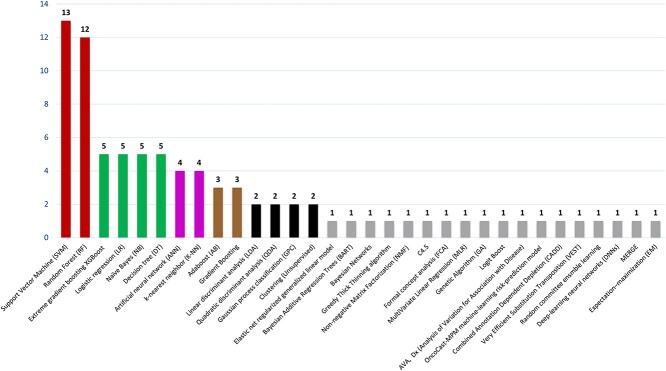Figure 2.
Total number of machine learning algorithms applied for predictive analysis. Figure includes algorithms: Random Forest (RF), Support Vector Machine (SVM), Gradient Boosting, Extreme gradient boosting XGBoost, Elastic net regularized generalized linear model, Logistic regression (LR), Artificial neural network (ANN), Naïve Bayes (NB), Bayesian Additive Regression Trees, Bayesian Networks, Greedy Thick Thinning algorithm, k-nearest neighbor (K-NN), Decision tree (DT), Linear discriminant analysis (LDA), Quadratic discriminant analysis (QDA), Gaussian process classification (GPC), Adaboost (AB), Non-negative Matrix Factorization (NMF), C4.5, Formal concept analysis (FCA), Clustering (Unsupervised), Multivariate Linear Regression (MLR), Genetic Algorithm (GA), Logit Boost, AVA,Dx (Analysis of Variation for Association with Disease), OncoCast-MPM machine-learning risk-prediction model, Combined Annotation Dependent Depletion (CADD), Very Efficient Substitution Transposition (VEST), Random Committee Ensemble Learning (RCEL), Deep Learning Neural Networks (DNNs), MERGE, and Expectation–maximization (EM).

